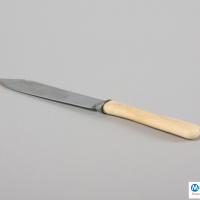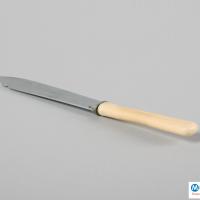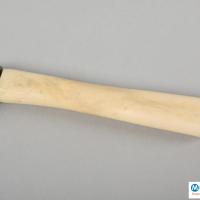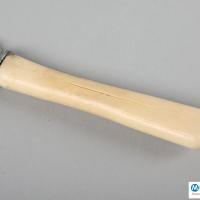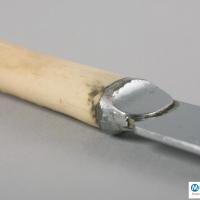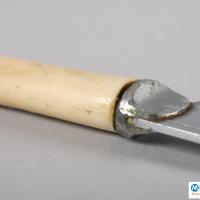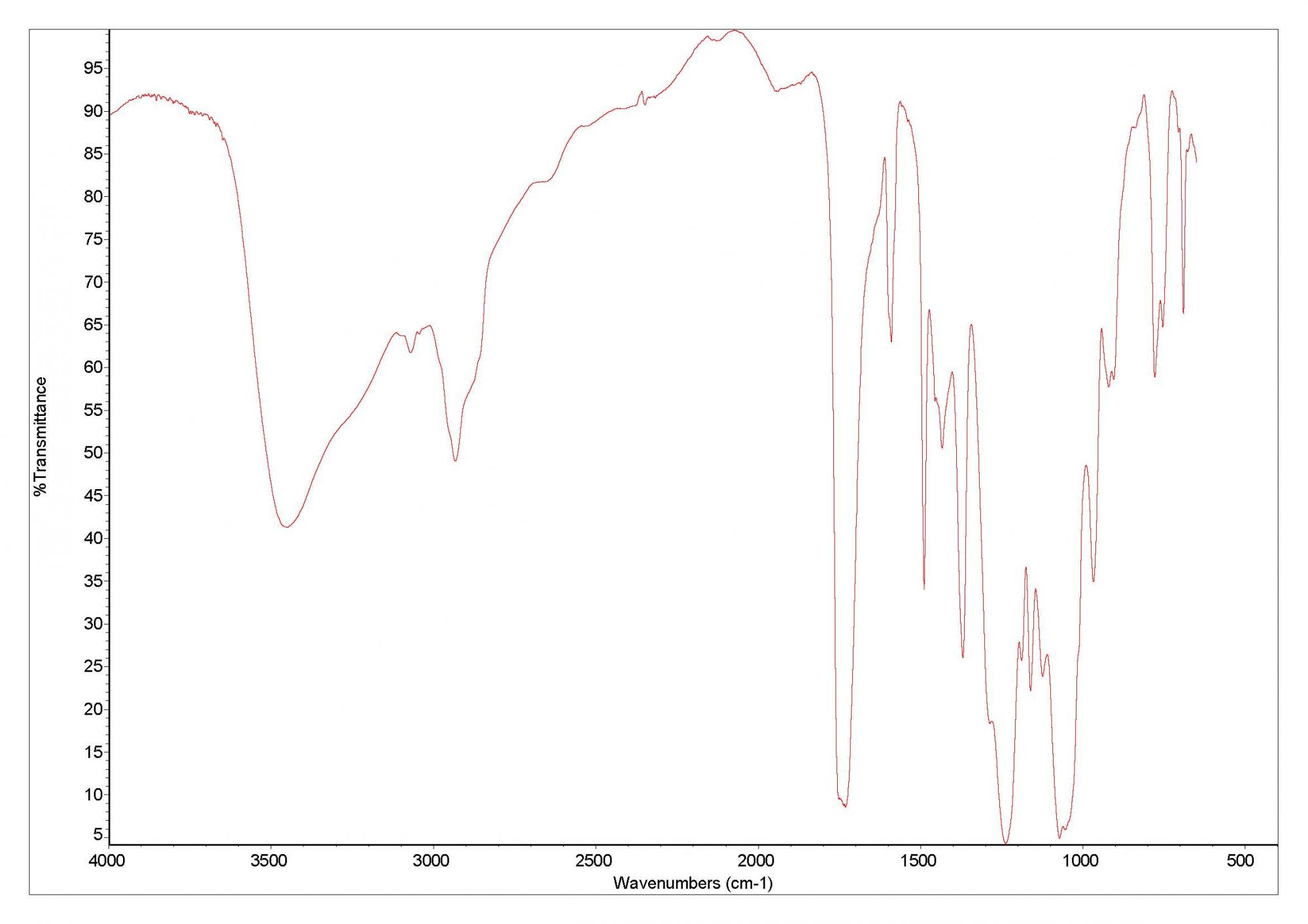
Fish knife, 1930s
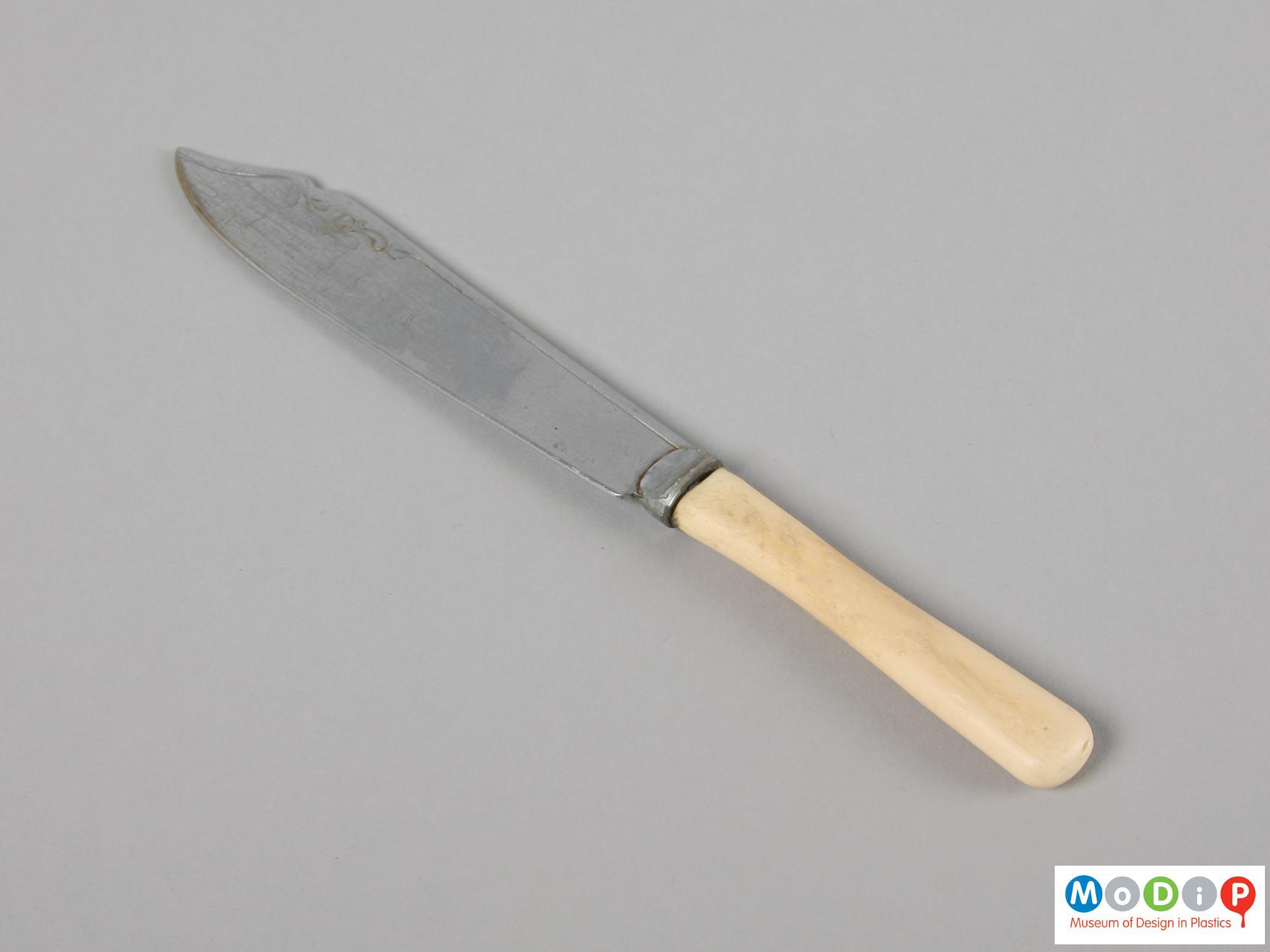
Source
Science Museum.
History
Its appearance is consistent with it having been much used and in and out of water.
Material
The handle is made of the featured material cellulose acetate (filled, compare with the toothbrush). The blade is of plated nickel silver.
Degradation
The handle feels very rough and has split. It is also distorted and shrinking away from the blade.
Degradation typical of the material not visible in this example
It could smell of vinegar/ acetic acid however filled cellulose acetate does not degrade as spectacularly as unfilled examples of the material. If the blade were made of steel it might have been turned rusty from contact with acetic acid.
Treatments
The damage cannot be reversed.
Display and storage
It should be kept in cool (ideally 2 - 5°C) and dry (ideally 20-30% RH) conditions. In storage it should be loosely wrapped in conservation grade acid free tissue and checked ideally every six months: look especially for changes to the texture of or shredding of the tissue.

